GUN TESTS GRADE: A-
$1800
Our 1964 Python was used and sure looked like it. This revolver had been rode hard and put away wet, but we wouldn’t detract points for cosmetics unless function was somehow compromised. The Royal Blue finish was worn off in areas from holster wear. The backstrap had a patina on it. The checkered walnut grips showed use consistent with the blue finish. In hand, we liked the feel of the ’64. The grip felt full and rounded at the backstrap without feeling too large. We liked the way the grip also filled the area behind the trigger guard.
| Action Type | Revolver |
| Trigger | Double action/Single action |
| Overall Length | 9.5 in. |
| Barrel Length | 4.0 in. |
| Sight Radius | 5.0 in. |
| Overall Height | 5.5 in. |
| Maximum Width | 1.4 in. |
| Weight Unloaded | 42.7 oz. |
| Weight Loaded | 43.6 oz. |
| Cylinder Gap | 0.003 in. |
| Capacity | 6 |
| Frame Finish | Blued |
| Barrel/Cylinder Finish | Blued |
| Frame Front Strap Height | 2.3 in. |
| Frame Back Strap Height | 3.8 in. |
| Grip | Wood, checkered walnut |
| Grip Thickness (max) | 1.5 in. |
| Grip Circumference (max) | 5.8 in. |
| Front Sight | Red ramp, removable |
| Rear Sight | Adjustable, notch |
| Trigger Pull Weight (DA) | 11.5 lbs. |
| Trigger Pull Weight (SA) | 3.6 lbs. |
| Trigger Span (DA) | 3.6 in. |
| Trigger Span (SA) | 3.1 in. |
| Safety | Hammer block |
| Warranty | None written |
| Telephone | (800) 962-2658 |
| Website | Colt.com |
| Made In | USA |
Though well used, this gun was still tight. The cylinder-to-forcing-cone gap measured 0.003 inches. And there was no wiggle in the cylinder. We preferred the checkered texture on the hammer over the new guns’ serrations. The trigger was fitted with a trigger shoe. A trigger shoe is a sleeve of metal machined to fit on the front face of the trigger that is wider than the original trigger and extends slightly more forward. They are held in place with two hex screws. The shoe allows the user to have more contact area on the trigger, with the finger making the trigger-pull weight feel a bit lighter. Our guess is the ‘64 was used as a competition gun. The shoe looks like it was manufactured by Tyler Mfg. (T-grips.com), which makes trigger shoes for revolvers, pistols, rifles, and shotguns. The double-action trigger pull was a smooth 11.5 pounds, though it felt less. In single action, the trigger pull was a nice 3.6 pounds.
This is a heavy revolver due to the full lug, and that’s a good thing for extended shooting because it absorbs recoil. It also makes carrying the revolver a chore, but the holsters and belts we chose made it easy to carry. The sharp corner on the barrel underlug could be felt dragging along the inside of the holster when reholstering the ’64.
The rear sight is adjustable for windage and elevation with indicator arrows. The front ramp sight was all black. We took a black Sharpie to the sharp edges on the rear sights to reduce glare. The black sights on black target can be difficult to see at times. The best accuracy we could squeeze out of this old snake at 25 yards was a five-shot group measuring 1.07 inches using Hornady Critical Defense 38 Special with 110-grain FTX bullets. Not bad for a well-used handgun. With 357 Magnum ammo, our best five-shot group measured 1.31 inches with Hornady Critical Defense loaded with a 125-grain FTX bullet. On average, groups averaged 1.75 inches. With 38 Special loads as well as 357 Magnums, the ’64 felt easy during recoil. We liked the rounded rear grip as it spread the force of the recoil in our palm. Shooting fast in DA mode, the ’64 shined. We liked the wide trigger shoe. We could stay on target easily and recover from recoil for fast follow-up shots.
We found the HKS, Safariland, and Pachmayr speedloaders hung up on the grip panel, causing the 357 Magnum cartridges to enter the chamber at an angle. The shorter 38 Special cartridges were marginally easier to load. The speedloaders also did not fully seat flush with the rear of the cylinder, so there was a gap between the speedloader and the cylinder. We could get the speedloaders to work, but they were anything but speedy, and because there wasn’t a flush fit, the cartridges closest to the grip could fall out of the speedloader and jiggle out of the chamber and onto the deck if we weren’t paying close attention. We found the Tuff speed loader to be the most effective on the ’64. Empties easily ejected and with no issues, though we did need a gravity assist to dump shells completely.
We swapped the original wood grip with the Pachmayr grips and found the speed loaders worked as they should. The ’64 rode in the Galco and Safariland holsters, but please note the trigger shoe is slightly wider than the trigger guard and when reholstering, the holster could drag on the trigger and could cause the weapon to fire. We found the ’64 had clearance between the holster and trigger shoe and could not get it to accidentally dry fire. Bottom line: Use a trigger shoe in competition and not for concealed carry where the holster encloses the trigger guard.
Our Team Said: Though the ’64 Python was well used and looked it, the wheelgun had good performance and accuracy. There was plenty of life in this old snake. Would we pay $1800 to $2000 for this revolver? Probably not.
Range Data
To collect accuracy data, we fired five-shot groups from a bench using a rest. Distance: 25 yards with open sights. We recorded velocities using a ProChrono digital chronograph set 10 feet from the muzzle.| Armscor 357 Magnum 158-grain FMJ | Colt Python (2020) 4.25-in. Barrel | Colt Python (1964) 4.0-in. Barrel | Colt Python (2020) 6.0-in. Barrel | Colt Python (1980) 6.0-in. Barrel |
| Average Velocity | 1042 fps | 1035 fps | 1151 fps | 1038 fps |
| Muzzle Energy | 381 ft.-lbs. | 376 ft.-lbs. | 465 ft.-lbs. | 378 ft.-lbs. |
| Smallest Group | 1.12 in. | 1.55 in. | 1.21 in. | 0.60 in. |
| Average Group | 1.36 in. | 1.78 in. | 1.36 in. | 1.07 in. |
| Hornady Critical Defense 357 Mag. 125-grain FTX | Colt Python (2020) 4.25-in. Barrel | Colt Python (1964) 4.0-in. Barrel | Colt Python (2020) 6.0-in. Barrel | Colt Python (1980) 6.0-in. Barrel |
| Average Velocity | 1367 fps | 1351 fps | 1459 fps | 1378 fps |
| Muzzle Energy | 519 ft.-lbs. | 507 ft.-lbs. | 591 ft.-lbs. | 527 ft.-lbs. |
| Smallest Group | 1.00 in. | 1.31 in. | 1.92 in. | 1.33 in. |
| Average Group | 1.03 in. | 1.77 in. | 2.02 in. | 1.42 in. |
| Winchester Defend 357 Magnum 110-grain JHP | Colt Python (2020) 4.25-in. Barrel | Colt Python (1964) 4.0-in. Barrel | Colt Python (2020) 6.0-in. Barrel | Colt Python (1980) 6.0-in. Barrel |
| Average Velocity | 1270 fps | 1266 fps | 1270 fps | 1258 fps |
| Muzzle Energy | 394 ft.-lbs. | 392 ft.-lbs. | 394 ft.-lbs. | 387 ft.-lbs. |
| Smallest Group | 0.50 in. | 2.19 in. | 1.32 in. | 1.02 in. |
| Average Group | 0.76 in. | 2.23 in. | 1.52 in. | 1.41 in. |
| Blazer 38 Special +P 125-grain JHP | Colt Python (2020) 4.25-in. Barrel | Colt Python (1964) 4.0-in. Barrel | Colt Python (2020) 6.0-in. Barrel | Colt Python (1980) 6.0-in. Barrel |
| Average Velocity | 1010 fps | 1000 fps | 1103 fps | 994 fps |
| Muzzle Energy | 284 ft.-lbs. | 278 ft.-lbs. | 338 ft.-lbs. | 274 ft.-lbs. |
| Smallest Group | 1.56 in. | 1.15 in. | 0.64 in. | 0.51 in. |
| Average Group | 1.69 in. | 1.27 in. | 0.97 in. | 1.06 in. |
| Hornady Critical Defense 38 Sp. 110-grain FTX | Colt Python (2020) 4.25-in. Barrel | Colt Python (1964) 4.0-in. Barrel | Colt Python (2020) 6.0-in. Barrel | Colt Python (1980) 6.0-in. Barrel |
| Average Velocity | 1000 fps | 990 fps | 1011 fps | 992 fps |
| Muzzle Energy | 244 ft.-lbs. | 239 ft.-lbs. | 250 ft.-lbs. | 199 ft.-lbs. |
| Smallest Group | 1.08 in. | 1.07 in. | 1.82 in. | 1.78 in. |
| Average Group | 1.24 in. | 1.26 in. | 2.08 in. | 2.15 in. |

























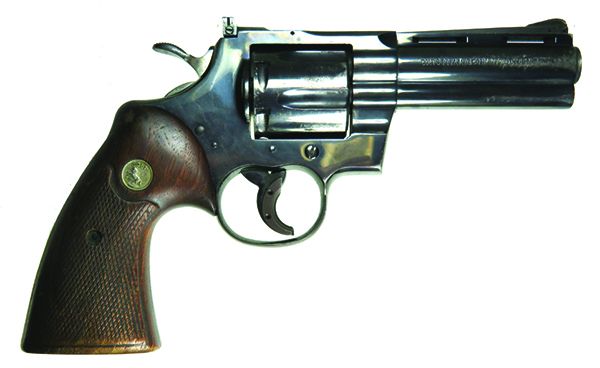
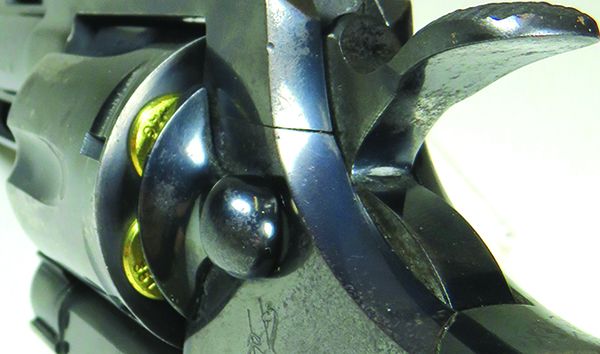
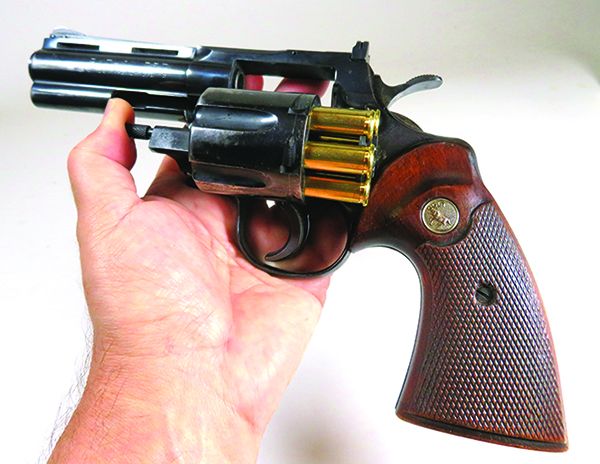
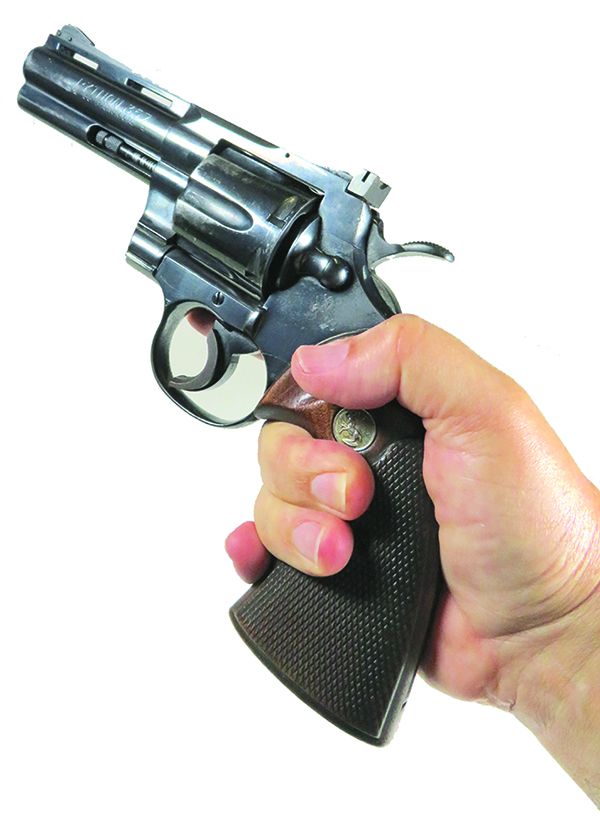
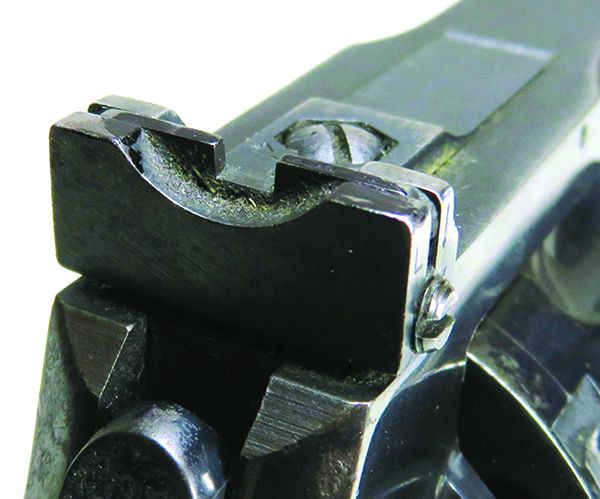
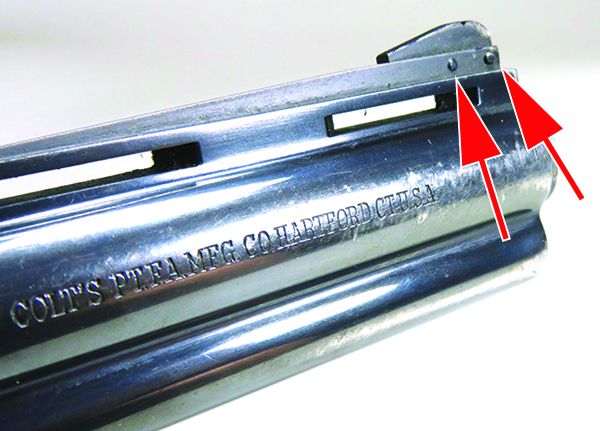
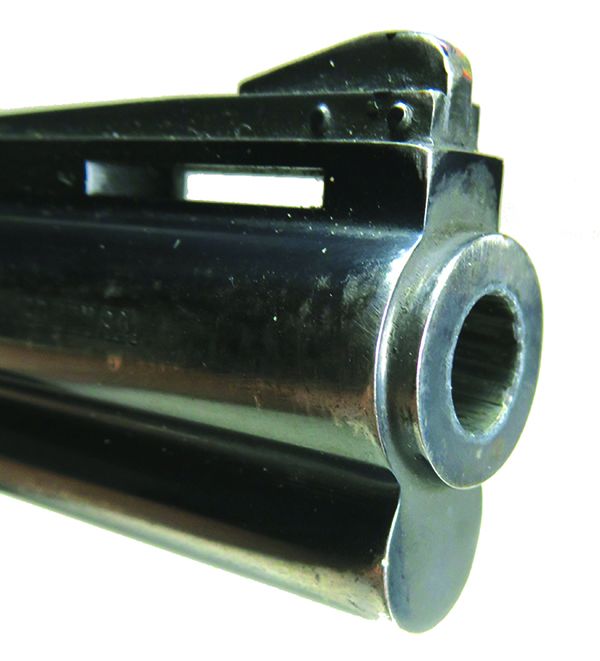
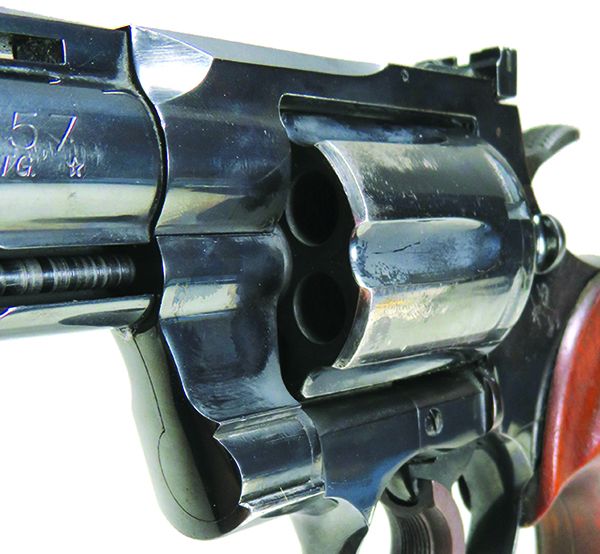

I have a couple of 4″ blue ones and one each 6″ stainless and blue, bought way way back at not so inflated prices. They are good pistols, but no better than S&W Model 27s in fit, finish, or function. The trigger stack-up characteristic of Colt used to bother me, but not anymore, for some reason.
Many people like the great big fat grip, but I can’t hold on to it – I have smaller grips on mine, which allows me to control in rapid DA fire. But then you had 4 guys test 475 Linebaughs, one each from Freedom Arms, Linebaugh, and another maker – no one liked the FA grip. I love the FA grip, think its the best grip for handling recoil from any maker. Personal taste and personal hand configurations make a huge difference.
Your test show 113 fps difference in average velocity between the two 6″ barrel pistols. This equates to a fairly substantial difference in driving pressure for the two guns, good reason for always starting your reloading weights low, even though the driving pressure difference doesn’t necessarily correlate to higher peak pressure exactly.
I enjoyed reading your test report, and agree that, for a working gun, $1800 seems pretty high. Justified only by the deep-seated need to have a Python. I paid a third of that for my Glock 20, which I regard as the most satisfying pistol I own – it has never failed to operate, it packs a punch, holds 16 rounds, and is clearly the product of some people who take function very, very seriously. But, I still love my Pythons.